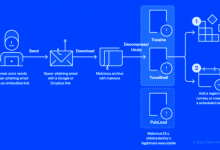Empowering People with Disabilities: Promoting Inclusive Accessibility
In today’s world, promoting inclusive accessibility for individuals with disabilities is not just a legal obligation but a moral responsibility. Empowering people with disabilities is not about sympathizing with their challenges but rather providing equal opportunities for them to thrive and succeed in all aspects of life. By removing physical, social, and attitudinal barriers, society can create a more inclusive and accessible environment for everyone.
Accessibility starts with universal design – creating products, services, and environments that can be accessed, understood, and used by every individual, regardless of their abilities. This means that buildings should have ramps, elevators, and wide doorways to accommodate those with mobility impairments. Websites and digital platforms should be designed with assistive technologies in mind, ensuring that individuals who are visually impaired can access and navigate the content easily.
Empowering people with disabilities also involves providing equal opportunities in education and employment. Access to quality education is essential for everyone, and individuals with disabilities should not be limited in their pursuit of knowledge. Schools and educational institutions need to have resources and support systems in place to cater to the unique needs of these students.
In the workplace, companies should promote inclusivity and diversity, recognizing that individuals with disabilities bring unique skills, perspectives, and experiences to the table. Employers should provide accommodations and necessary support to ensure that individuals with disabilities can perform their duties efficiently. By removing barriers in the workplace and fostering a welcoming environment, employers can tap into a pool of talented individuals and create a more inclusive work culture.
Another crucial aspect of empowering people with disabilities is promoting social inclusion and combatting discrimination. Society’s attitudes play a significant role in how individuals with disabilities are perceived and treated. It is vital to challenge stereotypes, educate the public, and create inclusive spaces where everyone feels welcomed and valued.
Furthermore, public spaces and transportation systems should be designed with accessibility in mind. Sidewalks, parks, and recreational areas should have ramps, tactile paths, and accessible amenities. Public transportation should be equipped with features that facilitate easy boarding and comfortable travel for individuals with disabilities.
To promote empowering people with disabilities, governments, organizations, and communities need to work together. Legislation should be in place to protect the rights of individuals with disabilities and ensure that their needs are adequately met. Governments should invest in infrastructure and resources to enable accessibility in all aspects of life. Organizations should prioritize inclusivity in their policies and practices. Communities should advocate for accessible designs and actively engage individuals with disabilities in decision-making processes.
It is important to understand that empowering people with disabilities is not a favor or an act of charity; it is about acknowledging their rights as equal citizens and providing them with the tools and opportunities to live a fulfilling life. By promoting inclusive accessibility, we can break down barriers, challenge societal norms, and create a society where everyone feels empowered and included.





